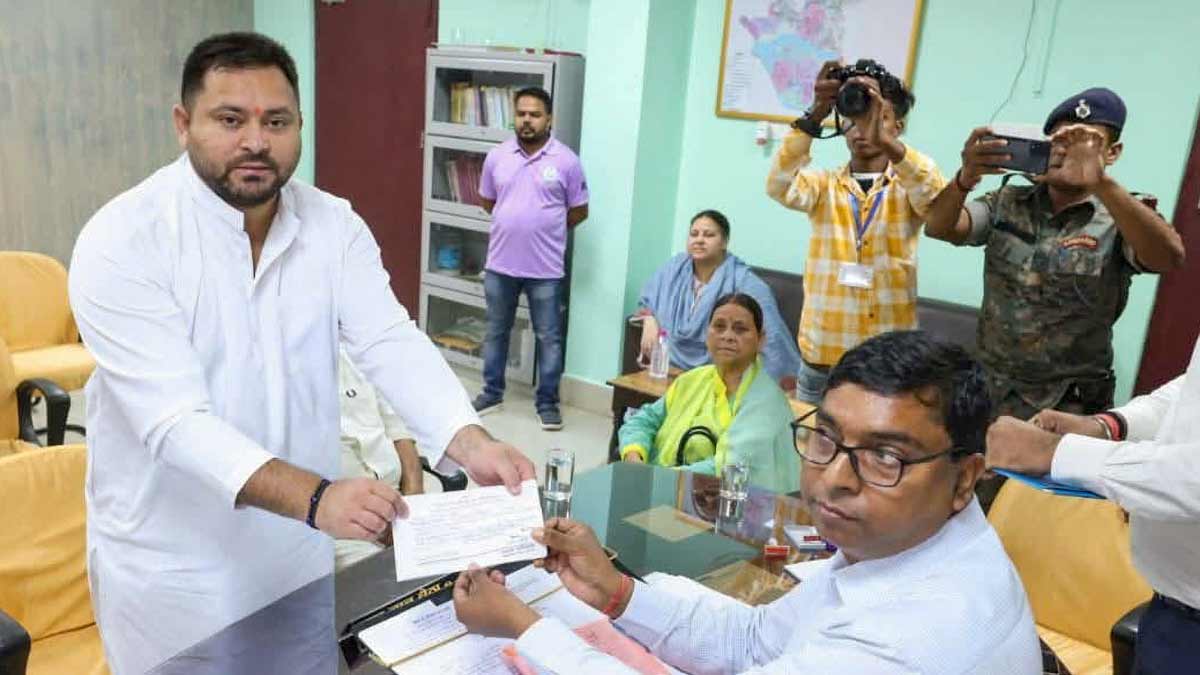Bihar elections: Why Mahagathbandhan's 'friendly fights' could be self-sabotage
 RJD leader and Leader of Opposition in Bihar Assembly Tejashwi Yadav files nomination from Raghopur constituency | PTI
RJD leader and Leader of Opposition in Bihar Assembly Tejashwi Yadav files nomination from Raghopur constituency | PTI
As the nomination process for the first phase of the Bihar Assembly elections ended on Friday, the ruling NDA camp executed its candidate selection with good coordination, while the Mahagathbandhan (Grand Alliance) finds itself mired in confusion and internal tussles over seat-sharing.
Despite days of negotiations, uncertainty continues within the RJD-led Grand Alliance, with several key allies—Congress, Left parties and Vikassheel Insaan Party (VIP)—fielding candidates against one another in nearly a dozen constituencies. This “friendly fight” may turn costly for the alliance, which is eyeing to form a government, if the nominations are not withdrawn by October 20.
According to sources, seats which may witness direct contests between partners of the alliance included Warsaliganj, Sikandra, Tarapur, Bachhwara, Lalganj, Rajapakar, and Vaishali. Both the RJD and the Congress have refused to budge on their claims on several of these constituencies, leading to an open rebellion at the local level.
While at some level it may be seen as a pressure tactic by the parties to convince their partners to leave the seat for them, it also shows a lack of coordination in the alliance. This has already invited a barrage of jibes from senior NDA leaders who claimed the grand alliance has come undone.
If the candidates do not withdraw in time, the Grand Alliance risks splitting its vote base, potentially handing over an advantage to the NDA in several close contests.
The prime reason for the disagreement in the opposition camp is RJD’s calculations that Congress’s record of winning seats has not been very good, which had dented its chances to form the government in 2020. The Congress, on the other hand, is keen to expand its base and build its organisation. The party thus has been aggressive in pushing its case as it did in Delhi and Haryana, where it rejected calls for alliances, though the results had been disastrous for it.
The discord is also reflected in the scenes at the headquarters of these parties. The BJP, after witnessing protests for the first two days of seat allocation, has got into the poll mode with a series of meetings taking place between the leaders and polling material loaded in mini trucks dispatched to the different regions of the state. On the other hand, ticket hopefuls are still crowded the RJD and Congress headquarters even as leaders avoided coming there.
While the opposition struggles to resolve its internal equations, the NDA alliance, comprising the BJP, JD(U), LJP (R), HAM, and RLM, has completed its candidate selection with relative ease. These parties have announced their full lists, balancing caste, regional, and gender representation.
Chief Minister Nitish Kumar's JD(U) has given special emphasis to the Extremely Backward Classes (EBCs) and women candidates, while the BJP has retained most of its sitting MLAs, barring 17. The NDA has fielded only five Muslim candidates—four by JD(U) and one by LJP(R)—apparently knowing the community would mostly side with the grand alliance.
The nomination process is still on for phase 2, and the last date of withdrawals is October 23. Only then does the real picture of key contests emerge. Despite its “successful” joint vote adhikar yatra led by Rahul Gandhi and Tejashwi Yadav, it remains to be seen whether the grand alliance will be able to repair its fractures and put up a united fight.
India